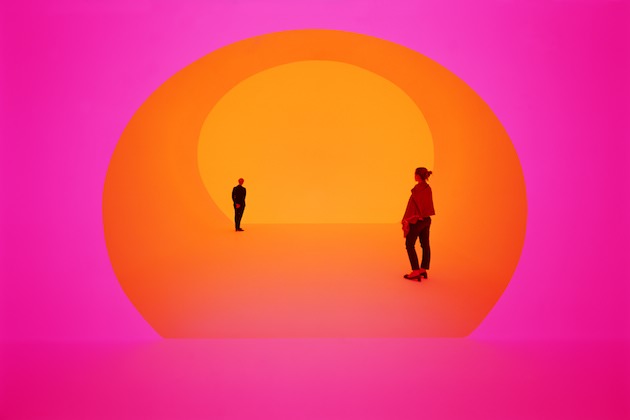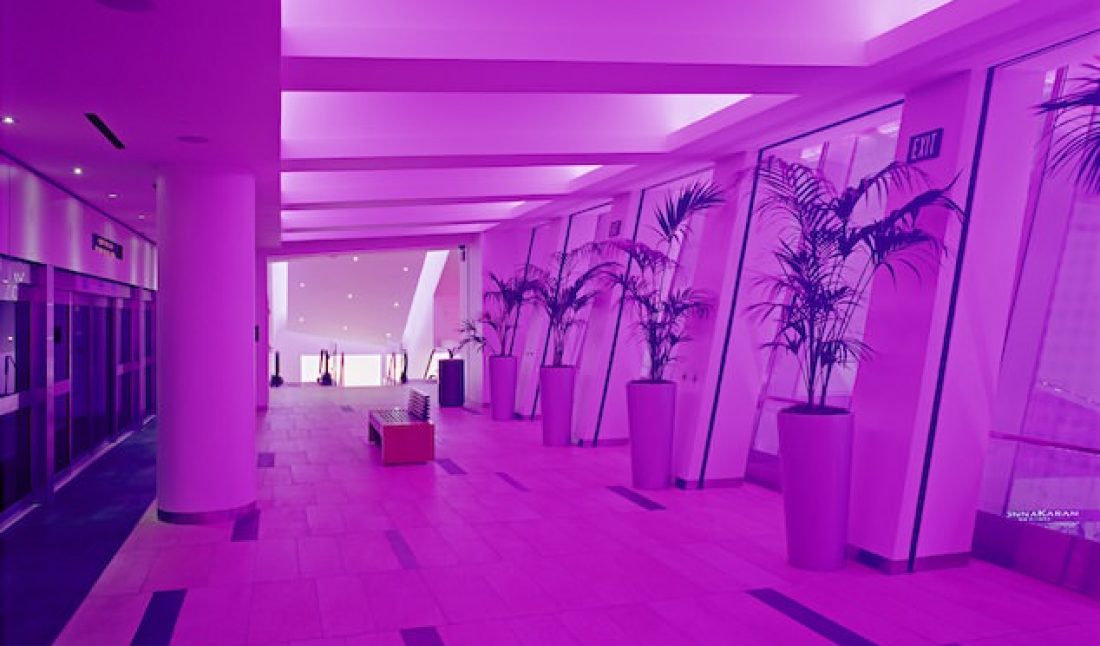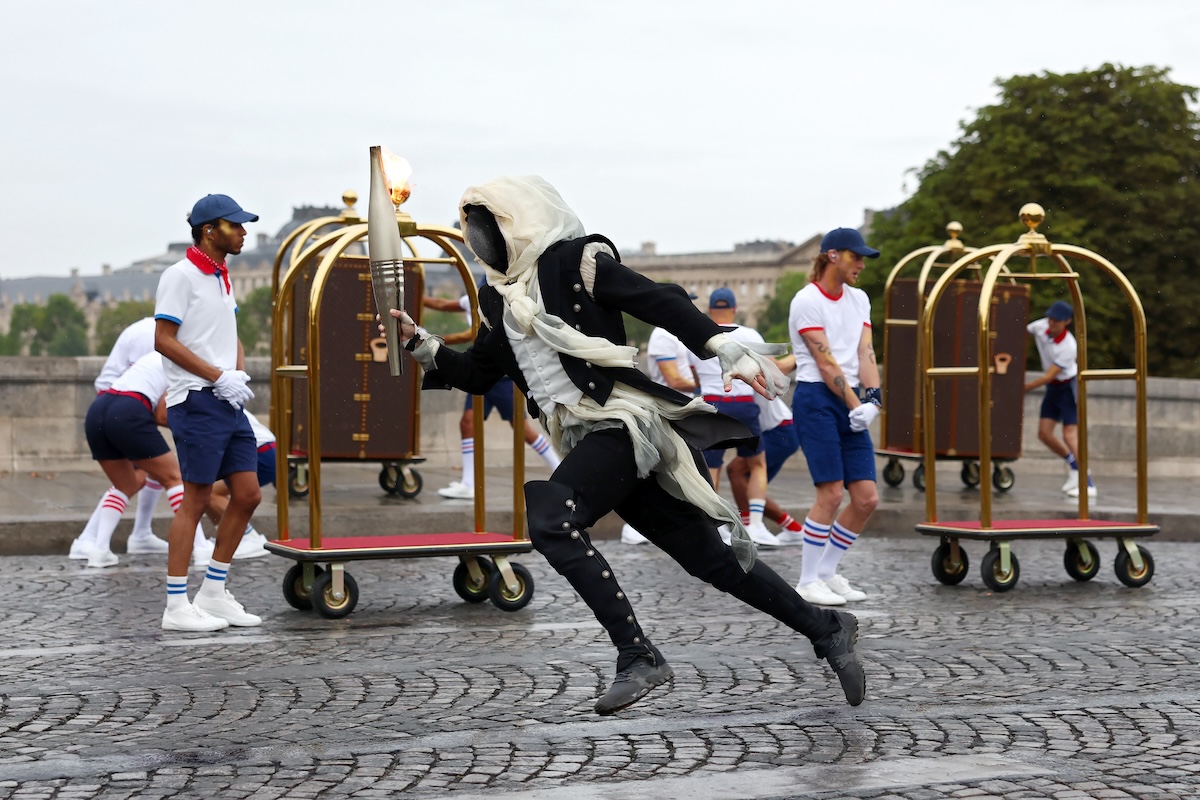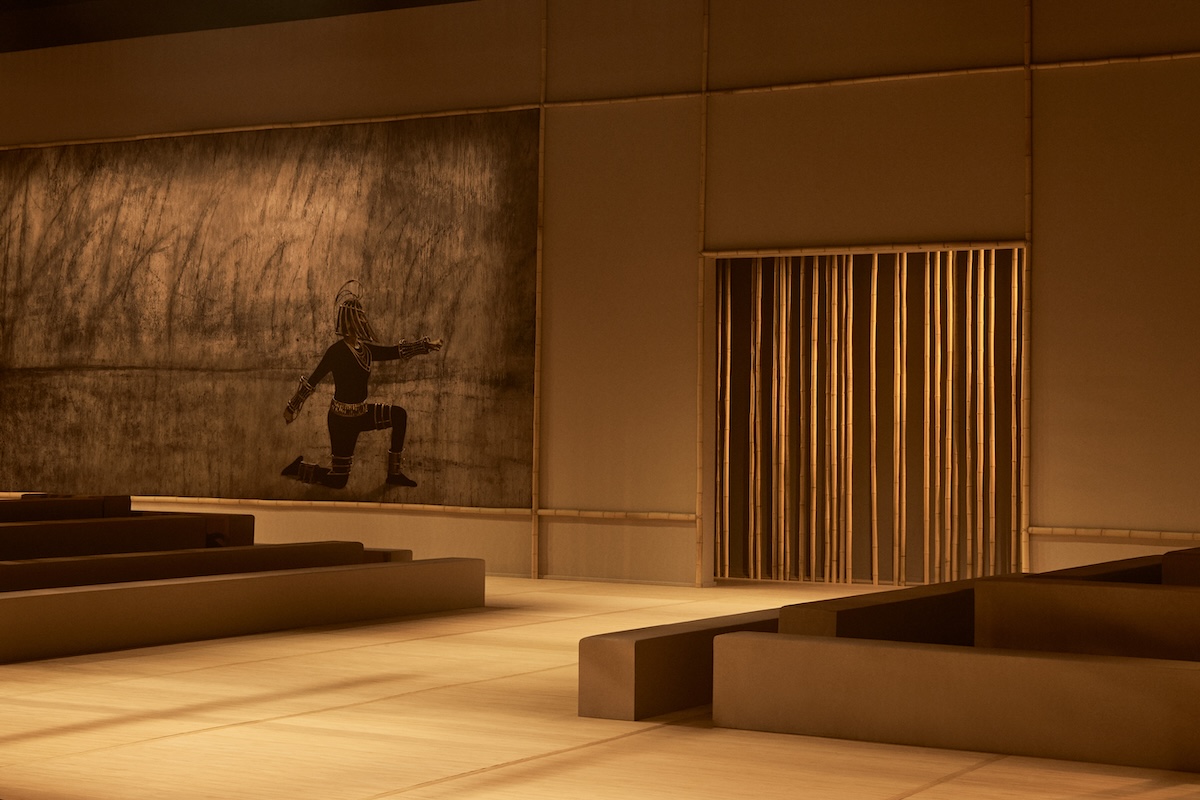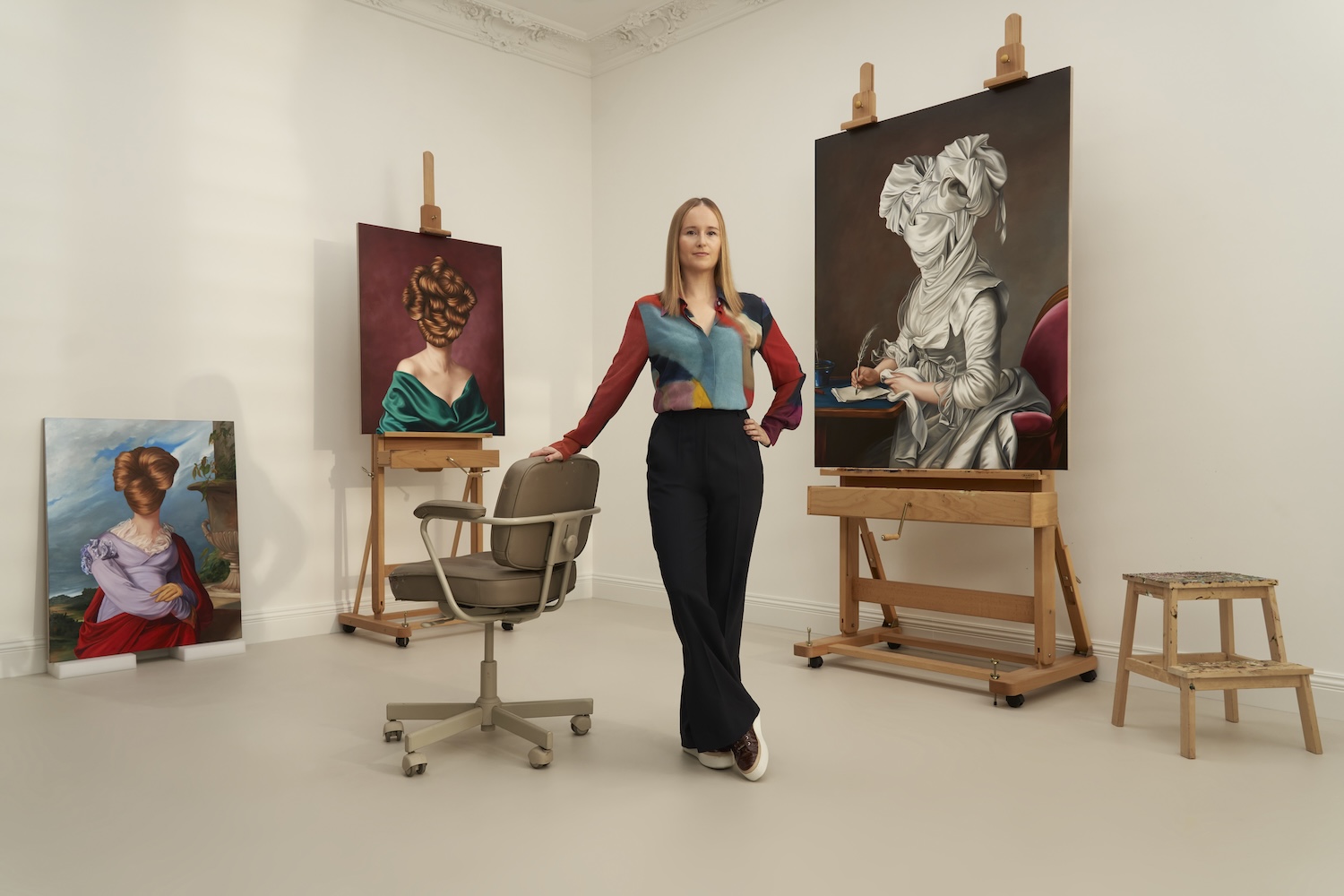Last weekend, a few art journalists, myself included, were summoned to take in a new James Turrell installation in Las Vegas. It was an addition to the collection on MGM Resorts’ CityCenter properties, a $9.2 billion mega-resort opened in 2009 on the Las Vegas Strip. CityCenter (credited with being a rescuing job-creator for Nevadans during the recession) includes several hotel-casinos and the Shops at Crystals, a luxury shopping mall with an impressive cluster of Fendi, Miu Miu, Louis Vuitton, and other high-end boutiques.
MGM Resorts (the second largest gaming company in the world behind Caesars) is in transition, recognizing that revenue from non-gaming activities like shopping and dining has usurped the gambling side of the business. Included in this plan to offer a wide variety of culture in a tightly packed space are not only several restaurants from celebrity chefs like Julian Serrano and a Cirque du Soleil show, but also an art program.
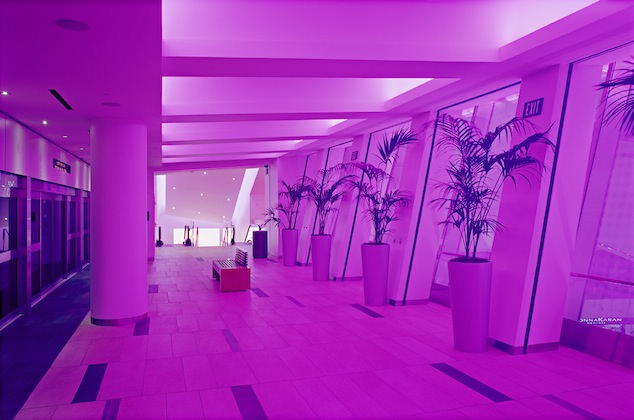
The initial investment in the collection scattered over the properties like an Easter egg hunt includes six core pieces chosen by a tight-knit team of supervisors, including MGM’s CEO Jim Murren, a noted art collector: a substantial Nancy Rubens sculpture made of canoes spiking out like a dandelion in seed hung precariously over a valet entrance, a genuinely excellent Jenny Holzer LED monitor that scrolls fortune cookie “truths” across a VIP valet entrance, a 1969 Frank Stella “protractor painting” inlaid behind a hotel desk that blends in a little too well with its surroundings, a series of shiny Tony Cragg sculptures, a Peter Wegner lighting installation sandwiched between two massive Wegner paintings made of thousands of sheets of paper, a reclining Henry Moore marble figure in an outdoor walkway, and a silver Maya Lin sculpture of the Colorado River (the source of Vegas’ water) hanging over a crowded lobby.
The purpose of our trip was to see the newest addition to the collection, James Turrell’s design of a monorail station connecting the Shops at Crystals with the Aria Hotel and Casino with a cutout in walls so that the light is viewable from the Shops below.
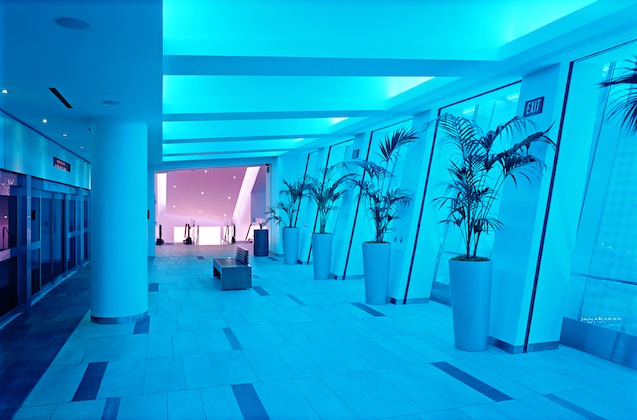
For the sake of understanding what it’s like to view a Turrell in a shopping center, let’s borrow an old real estate adage and apply it to art: “Context, context, context.” Turrell’s faculty to impress perceptual change cruxes on his ability to maintain a controlled attentiveness in his audience. You need to focus on his work, to introspect on what light means to you, to try and reach a state of pre-language, and lose yourself within a pure space.
When Turrell fails, it’s because there are too many other distractions to fully commit yourself to the work. It’s hard in Vegas. Stepping off the monorail feels like you are stepping into a pirate Turrell created by the shopping center to offer a “unique lighting experience” for a tranquil shopping excursion.
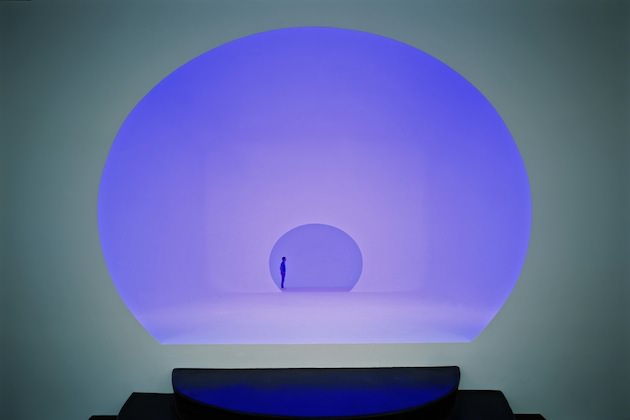
Worry bubbles pop in my mind—am I becoming numb to Turrell’s magic? Does his commodification of light work in a place where luxury is commoditized? Are Turrell’s muted perceptual gestures too soft for Vegas’ harsh neon overload? Or will they blend in entirely to a city so rampant with color, undetectable to the untrained eye? Does any art (not just Turrell’s) register in Las Vegas, where people bustle across ten-lane streets to water shows and lion tricks and trapeze artists and Michael Jackson tributes (not to mention the requisite gambling and drinking), at all?
Gazing up at the Turrell piece glowing above the shopping center, it’s difficult to believe that Turrell was once underappreciated. Turrell is the undisputed 2013 Beyoncé of the art world, headlining a multi-city summer mega-tour of exhibitions and openings that you can read about in practically every publication from The New York Times Magazine to The Financial Times to The Wall Street Journal to Gizmodo to Vogue to Whitewall [out later this month in the summer 2013 Design Issue], and his place in one of America’s most luxuriant shopping centers has slammed the point home.
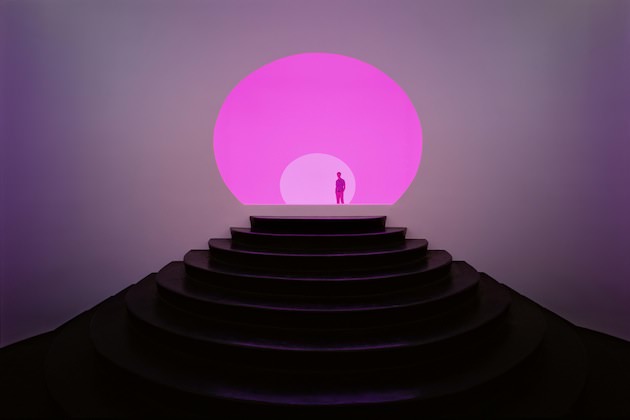
If you’re even tangentially interested in art in 2013, there’s no mistaking the morphing pastel aura radiating from the geometric shapes built into Daniel Libeskind’s jut-walled building. I’m duly impressed by MGM’s attempt to bring something so culturally significant to their commercial zone, and I’m happy that Turrell can slowly collect more money to finish the Roden Crater. But, as I thought these things, two tourists wearing fanny packs leaned over the edge of the cutout, unaware that the unearthly glow was anything but decorative lighting.
We continued to a nearby Louis Vuitton store. On the semi-private (non-exclusive, but not particularly advertised) dimly lit fourth floor, we were greeted by two unnervingly attractive art school students, cast as “guides” who will lead you into one of Turrell’s “ganzfeld rooms” (this one is titled Akhob after the Egyptian word for “pure water”), commissioned entirely separately from the monorail station—another testament to Turrell’s clout. These rooms are inspired by the perceptual deprivation experienced by miners trapped in pitch black after a cave-in or arctic explorers in featureless white landscapes during a snowstorm and are meant to induce hallucinatory effects.

To enter the room, one climbs stairs that resemble an Aztec pyramid’s into a pristinely white, curved room. The room ends, dropping off like the continental shelf, and you are confronted with the vastness of space, colored by Turrell’s special concoction of glowing lights. Having recently seen a large, four-person capacity ganzfeld at the Los Angeles County Museum of Art, I was anticipating a lessened experience. Happily, I can report that these ganzfeld rooms are perfect for repeated viewing. It was also helpful that there was no pre-ordained time limit on staying in the work—limits are one of those distractions that make viewing a Turrell work in public somewhat aggravating.
But the most difficult thing about the whole experience is writing about it. I wonder how many people reading this are going to go to Las Vegas, and how many will stay at the Aria, or remember to call the Louis Vuitton hotline on their website that gains you access to Akhob. Another journalist carped that you can’t actually understand Turrell if you’ve never seen one, so how can you describe the ineffable? In other words, if you haven’t seen a Turrell, you may not quite understand what all the hubbub in the newspapers and magazines is about. There’s only so many ways you can describe the beautiful lights and colors that Turrell achieves: Tron blue, alien spaceship green, the orange hue of lava.
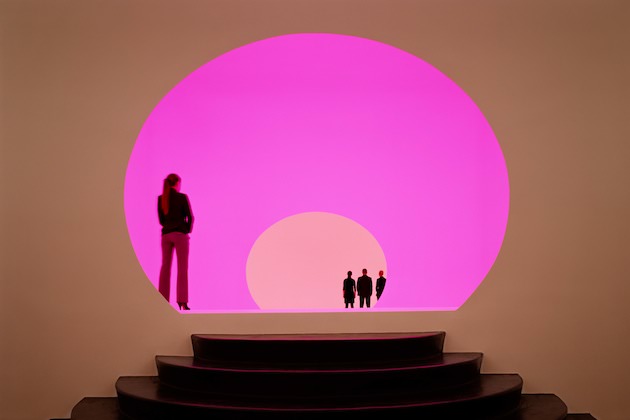
Later, we were transported in white escalades to Jim Murren’s house, where the journalists are treated to Murren’s private sky space that Turrell finished a few years ago. Built into a domed structure with a square hole in the roof, and on platform seats like a sauna, we watched the sun set.
Like many Turrell pieces, it’s absolutely gorgeous. Murren regaled our group of journalists with stories about going to Roden Crater and how Turrell claims that the coppery metallic color in the Vegas sky exists nowhere else. We’re the first outsiders in Murren’s extremely personal space. I felt intrusive, but it rounded out the weekend nicely: Turrell in a shopping center for all to see, Turrell in a secret room at a boutique, and Turrell in a private home.
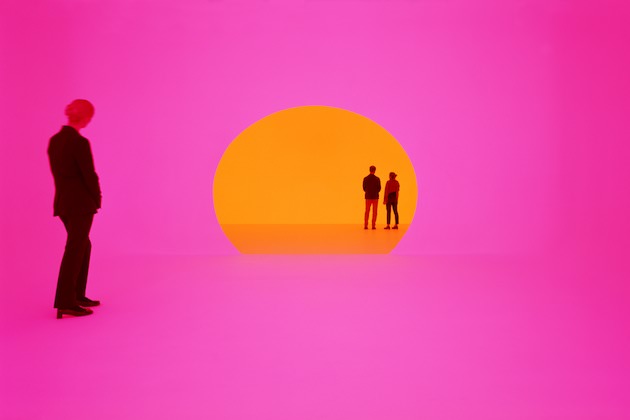
It’s a difficult pill to swallow, but Turrell’s work simply plays better the more private his work is, and nowhere is more proof than in Las Vegas. The sins contained in the Crystals cutout are manifold—the welcome sign to the shopping mall meshes with it, roping the Turrell piece into it; a Starbucks logo is visible both looking down from the piece and looking up at it; the mundane escalators that you can’t ignore. The Louis Vuitton piece is more powerful, and, of course, having your own Turrell at your home is the winner-winner-chicken-dinner.
Appreciating art in Las Vegas is like picking out a single voice in a stadium. I wonder who will notice, and what it will mean to those people if they do notice. Still, it’s an impressive effort for CityCenter’s art collection to try and sprinkle a little of Turrell’s beauty on the tourists. There’s absolutely nothing wrong with trying.
